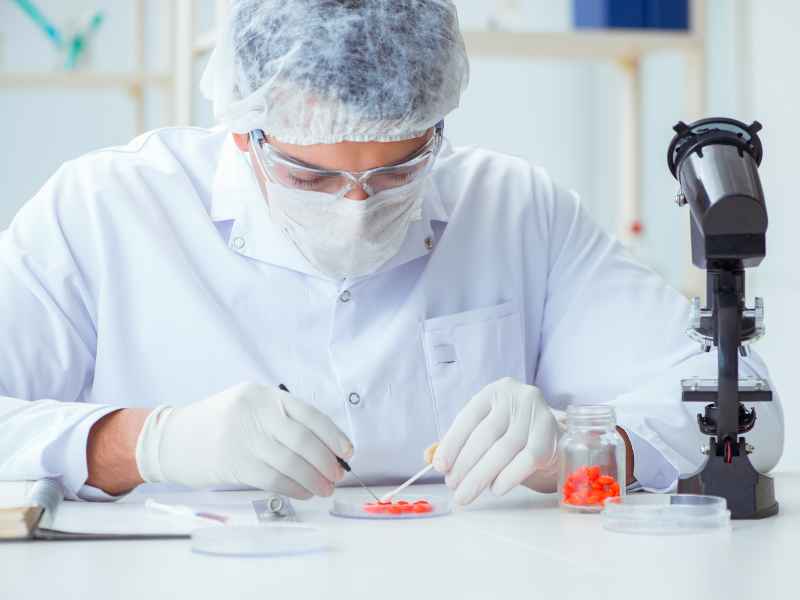Medical Device Testing
Cracking the code on medical device testing is like unlocking a treasure chest for those in the know. If you’re aiming to get your devices into hospitals and clinics, stick around. You’ll pick up insights on navigating regulations like MDR and FDA requirements that are as critical as they are complex.
We’ll map out how to tailor test plans that open doors to global markets, plus dig into microbiology testing—a must for proving sterility. Then, we’re diving deep into safety with rigorous tests designed to shield patients from harm.
Last but not least, let’s chat about CROs—your secret weapon packed with technical expertise—for all things medical device development. Get ready; this read could be just what you need for smoother sailing through those regulatory hoops.

Understanding the Medical Device Regulation (MDR) and FDA Requirements
The Medical Device Regulation (MDR), which took over from the MDD, revamped standards across EU member states. This means tighter controls for medical device testing regulations to improve safety and quality. What changes have been made to medical device regulations in the US? In the US, FDA’s Center of Devices and Radiological Health (CDRH) categorizes devices into three classes based on risk.
Key Changes with the Introduction of MDR
To keep up with innovative medical breakthroughs like BioChange’s skin tissue regeneration tech, Europe has upped its game. The new rules demand more rigorous tests for a wide variety of products in healthcare settings – think durability testing that would make even smartphones jealous. It all comes down to ensuring your life-saving gadget won’t call it quits after just one season.
Classification and Compliance in U.S. Medical Device Testing
If you’re navigating this landscape as a device manufacturer, consider yourself part map-reader, part tightrope-walker balancing between Classes I through III—each step dictated by potential risks to patient care. Landing your product safely onto market shelves is an art form; but fear not. With robust test plans matching FDA requirements perfectly tailored gloves will let you handle any compliance curveballs thrown your way.
Navigating Global Market Access Through [
Cracking the code for global market access demands more than just a brilliant medical device; it calls for a strategic game plan that navigates through complex compliance testing and meets regulatory requirements head-on. Picture this: your groundbreaking medical product is ready to transform patient care, but first, it has to pass muster with international standards.
Developing a test plan isn’t just box-ticking—it’s an intricate dance with regulations that vary from country to country. It means having technical expertise in spades and ensuring your device doesn’t drop the ball when facing rigorous tests like electromagnetic compatibility (EMC) or chemical characterization. For instance, let’s talk about end-to-end testing—this isn’t some industry buzzword; it’s what stands between you and the coveted stamp of approval for safety testing across borders.
A comprehensive approach can mitigate risks down the line because we know that one oversight could mean setbacks not just on timelines but also on trust within the competitive devices healthcare landscape. The goal? To assure stakeholders—from investors to end-users—that every beat of your device’s lifecycle adheres to top-notch manufacturing practices. Medical Device Regulation (MDR) shook up Europe with its stringent directives, while over in Uncle Sam’s backyard, FDA guidelines keep manufacturers on their toes—so getting savvy with these nuances is key.
The Role of Microbiology Testing in Ensuring Device Sterility
Imagine a world where medical devices could compromise patient safety due to unseen microbial guests. That’s where microbiology testing becomes our superhero, swooping in to validate the sterility of these life-saving instruments. It’s not just about following rules; it’s about keeping patients out of harm’s way.
Microbiology testing doesn’t stop at declaring a device “clean.” With reusable device validations and rigorous antimicrobial effectiveness tests, we ensure that each sterilization cycle maintains its integrity over time. This relentless scrutiny underpins the trust we place in every piece of medical equipment used across healthcare settings.
In the portfolio for ensuring this level of confidence, reusable device validations stand tall alongside lot-release testing and microbial ingress tests—all working together like an elite squad safeguarding patient health from sneaky bacterial invasions. And let’s be real—nobody wants those kinds of surprises during recovery.
Enhancing Patient Safety with Rigorous Medical Device Testing Programs
The safety and efficacy of medical devices directly influence patient care, making rigorous testing programs non-negotiable. With usability testing for medical devices, we’re not just ticking boxes; we’re diving deep into how real people interact with these products in the wild – because when push comes to shove in an emergency room or a surgical suite, ease of use can be lifesaving.
Performance testing is another critical area where there’s no room for error. A device that performs flawlessly under lab conditions but fails in the field isn’t worth the materials it’s built from. That’s why our comprehensive performance evaluations are designed to simulate every conceivable scenario a device might encounter once it leaves the safety net of its manufacturing facility.
To help ensure these high standards lead to reliable market access, all devices must meet stringent international standards—this is where robust test plans come into play. They’re like blueprints for success: meticulously detailing every step needed to prove a device will perform as intended while meeting global marketplace demands and mitigating risks along the way.
Expertise in Medical Device Testing Services – A Closer Look at CROs
When it comes to introducing revolutionary medical technology into the healthcare sector, having technical proficiency is essential. Contract Research Organizations (CROs), such as Da-Ta Biotech LTD, Biotech Farm LTD and Biotech Anatomy LTD, stand out as the backbone of device development and testing, offering end-to-end services that span from early concept stages right through to post-market surveillance.
CROs are no strangers to navigating the intricate maze of regulatory compliance. Their mastery over standards like those set by the FDA for electromagnetic compatibility or durability is essential. With a well-crafted test plan, these organizations make sure your medical product doesn’t just meet but exceeds global marketplace expectations while mitigating risks every step of the way.
The proficiency of a CRO goes beyond mere checks; it encompasses rigorous tests across microbiology and reusability validation studies—critical when patient care hinges on sterile and functional equipment. Through comprehensive performance testing programs rooted in scientific rigor, they give robust assurances that each medical device performs safely under real-world conditions. Discover more about how CROs uphold industry standards here.
Assessing Post-Market Surveillance and Incident Reporting Protocols
The safety dance doesn’t stop once a medical device hits the market. It’s crucial for manufacturers to keep an eye on their products out in the wild, through robust post-market surveillance and mandatory incident reporting protocols. These measures are not just about ticking regulatory boxes; they’re about ensuring that devices continue to operate safely long after they’ve left the factory floor.
In line with FDA guidelines, incidents causing harm must swiftly make their way into reports filed with authorities. Think of it as medical device vigilance – staying alert can prevent future mishaps. And we’re not talking minor slips here: any injury or death related to a device has got to be flagged immediately because patient care is at stake.
Whether you’re navigating through CDRH requirements or tangoing with global standards like those outlined by MDR – which took over from MDD across EU member states – your endgame is always safeguarding user health while maintaining access in this competitive arena we call the global marketplace.
Conclusion
So, you’ve navigated the MDR and FDA’s maze. You know that top-notch medical device testing is your golden ticket to patient safety and market success. You’re clued into why test plans are pivotal. They’re not just paperwork; they’re blueprints for international acclaim. Remember microbiology tests? Those are your assurances against infection risks—non-negotiables in reusable devices.
Rigorous testing isn’t overkill—it’s armor for those we care for most. Every performance check, every usability trial adds layers of trust. And let’s not forget CROs with their deep-dive expertise; think of them as seasoned guides on this compliance journey.
Last up: Post-market vigilance keeps standards high after the launch. It’s all about maintaining a clear conscience alongside a clear record. Keep these insights close—they’re practical pieces to master the puzzle of medical device testing.


